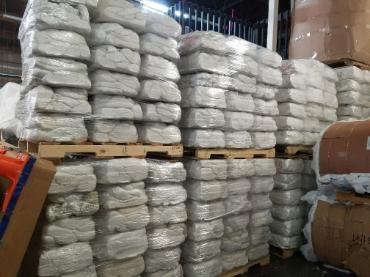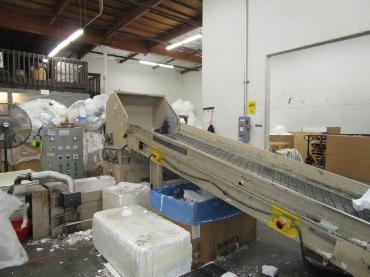
Other Waste Streams
Going Beyond Three Streams: Path to Zero-Waste
Seattle University has set a goal of becoming a zero-waste campus by 2025. One of the ways we are working to achieve this goal is by reducing what we send to the landfill. Special items we collect for recovery include:
- Styrofoam and packing peanuts are collected and sent to Styro Recycle.
- Plastic film products including grocery bags, bubble wrap, and plastic packaging are also collected by Styro Recycle.
- Clothing and small household products are donated to the Northwest Center.
- Household items and furniture go to Goodwill, Ballard Reuse, Second Use, and other local businesses.
- Scrap metal and pallets are collected by a local family-owned business for reuse and recycling
- Electronic waste (e-waste) is collected by 3R Technology and is resold, donated, or recycled.
- Batteries and light bulbs are sorted and collected by Clean Earth Environmental Solutions for proper recycling.
This is not a comprehensive list of the items we divert, but provides some examples of our collections. If you have an idea for improving our waste diversion, please reach out to the SU Recycling team!
E-Waste Recycling Process
- The SU Recycling team has special collection bins for e-waste, collected from the campus through the work order system and recycling events. Once these bins are full, they are collected by 3R Technology.
- At the 3R processing facility, the e-waste is sorted based on its potential for reuse or recycling. Reusable products are resold in stores or online, or donated to local nonprofits.
- E-waste that can’t be reused as-is is hand-disassembled if it can be repaired or the parts can be reused, or shredded for recycling if it can’t. Shredded material then can be reused in the manufacturing of new goods.
Styrofoam Recycling Process
- The SU Recycling team has special collection bins for Styrofoam products around campus. The recycling team then sorts through the product and removes unrecycleable materials including tape and sticker labels.
- The accumulated product is collected by Styro Recycle.
- At the Styro Recycle facility, the expanded polystyrene (EPS) is cleaned and dried before being fed into the densifying machine.
- The machine grinds the EPS into a thick, taffy-like paste which is extruded into blocks and left to cool.
- The blocks are then stacked onto pallets and sold to manufacturers.
- Manufacturers regrind or reprocess the compacted material into pellets to produce a variety of plastic products including picture frames, CD/DVD cases, and TV casing.

Images Courtesy of Lauren Kobayashi; 3R Technology, [Will Austin]; and StyroRecycle.
